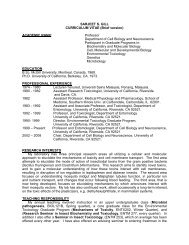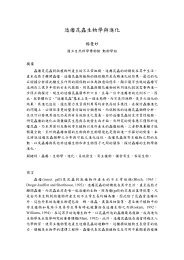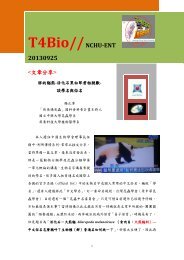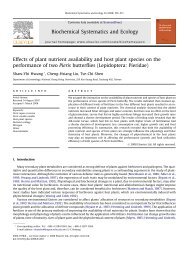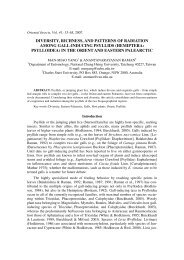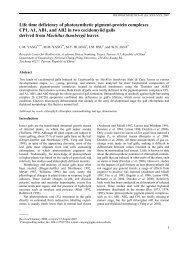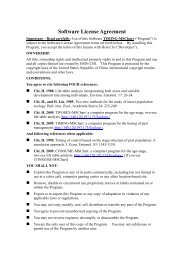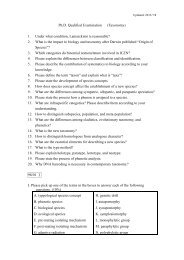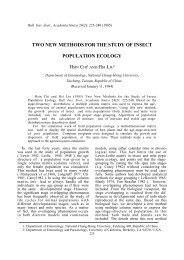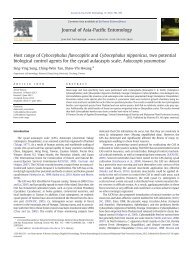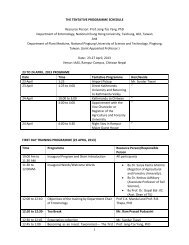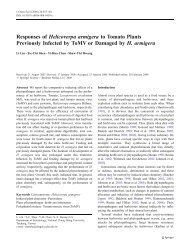é²æ²»(Pest Management)
é²æ²»(Pest Management)
é²æ²»(Pest Management)
You also want an ePaper? Increase the reach of your titles
YUMPU automatically turns print PDFs into web optimized ePapers that Google loves.
更 新 日 期 :2014-6-18<br />
101/01 Ⅰ<br />
(Please choose 5 test questions from them)<br />
1.Insects are the majority vectors of arthropod-borne pathogens, such as<br />
Aphididae, Aleyrodidae, Psyllidae, Cicadellidae, Delphacidae and<br />
Cercopidae. Please describe the transmission pathway (mechanism) of<br />
plant pathogens by vectors. (please give one example for description)<br />
2.The modes of action (MOA) of organochlorines, organophosphates,<br />
synthetic pyrethroids, nicotinoids, and insect growth regulators (IGRs) are<br />
different from each other. Please describe the superiorities and defects of<br />
them.<br />
3.Please propose one Integrated <strong>Pest</strong> <strong>Management</strong> (IPM)-based Farming<br />
System for a citrus orchard. (you may give an example of any else crop)<br />
4.What is the mode of action (infection process) of nuclearpolyhedrosis<br />
virus (NPV)? Please give an example of NPV for controlling the pest and<br />
describe the cautions about application.<br />
5.Cultural techniques comprise those that involve the manipulation of an<br />
agroecosystem in order to decrease the success of pest species within it.<br />
Please describe the relative techniques for improving plant health.<br />
6.The three ways in which biocontrol agents can be used, such as classical<br />
biological control, augmentation/inoculation, and habitat manipulation. 1).<br />
How to choose the most appropriate way for the pest control in different<br />
situations? 2). Please give a schematic of a stepwise procedure for<br />
setting up a classical biological control program.<br />
101/01Ⅱ<br />
1. Explain the interactions between insect vectors, plant viruses and their<br />
hostplants on transmitting insect-borne plant diseases, and describe how to<br />
manage the disease transmission in the fields.(15%)<br />
2. Give an example to explain how to enhance microbial control effect in<br />
pest management in the fields.(10%)



